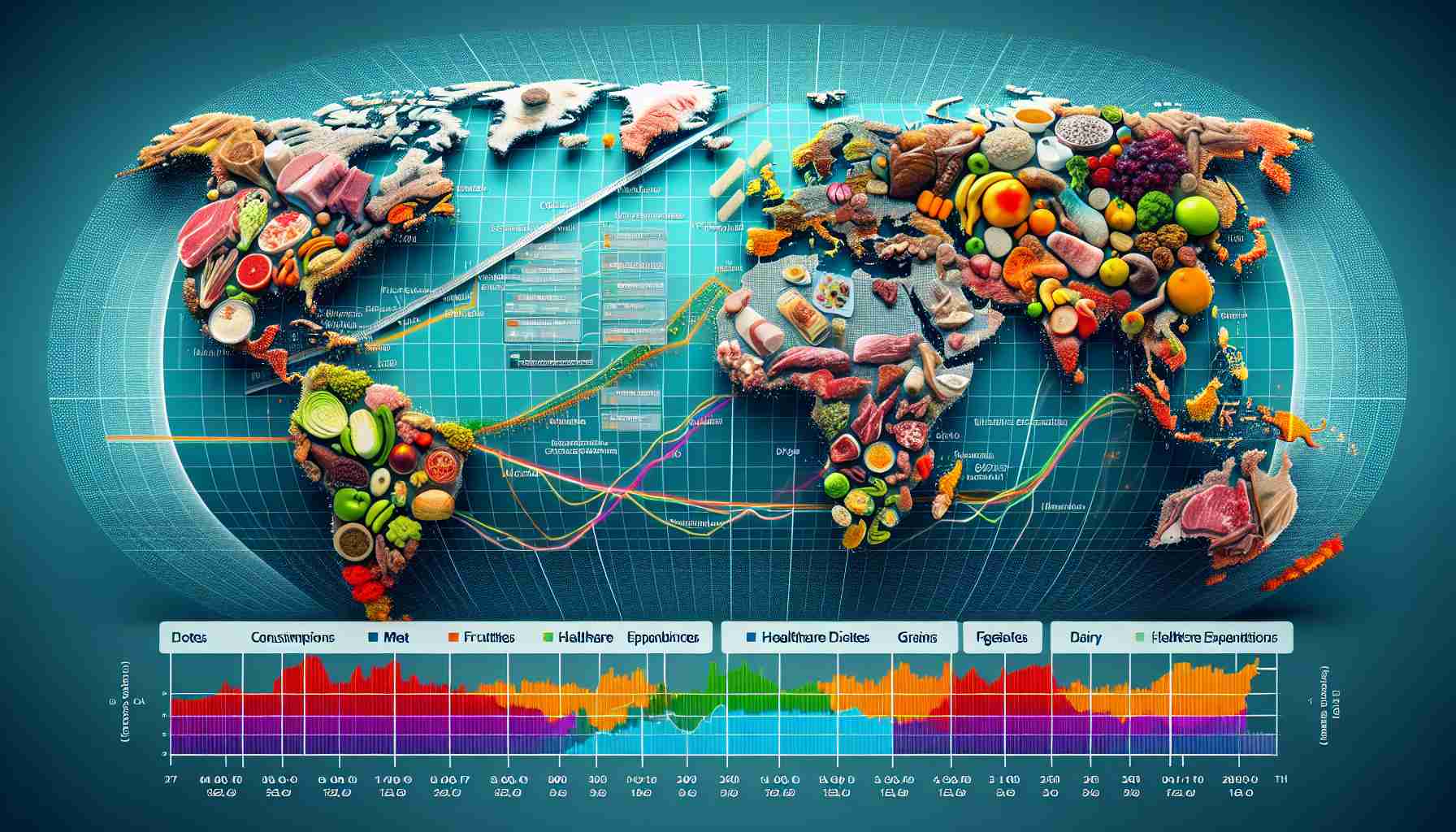Introduction: The correlation between diet and health outcomes has become a pressing concern globally, as unhealthy dietary patterns contribute significantly to the burden of disease (Clark et al., 2019). The shift towards diets high in protein and fat is a key driver of preventable deaths worldwide, exceeding the impact of other risk factors like smoking (GBD, 2017). This shift has resulted in a surge in healthcare spending, amounting to $7.9 trillion globally in 2020 (WHO, 2021), with improvements in life expectancy but a simultaneous rise in diet-related non-communicable diseases (UN, 2022).
Exploring the Relationship: Research on the impact of diet on healthcare costs has gained traction, particularly focusing on the link between obesity, dietary habits, and healthcare expenditures (Tremmel et al., 2017). Studies employing various methodologies, such as statistical models and clinical experiments, have delved into the complex interplay between individual diets and healthcare costs (Dall et al., 2009; Zhang et al., 2017). Noteworthy factors include the association between specific nutrients and health spending, as well as the disease risks posed by dietary elements (Chiuve et al., 2012; Abdullah et al., 2015).
Macro Perspectives: While micro-level studies have extensively examined the impact of diet on health costs, understanding the implications of broader dietary shifts on national healthcare expenditures is equally vital. The evolution of national dietary structures can result in substantial indirect costs, as seen with obesity in China (Popkin et al., 2006). Hence, investigating how changes in diets affect macro-scale healthcare spending and the overall health system is paramount for optimizing costs and fostering a culture of healthy eating habits.
By shedding light on the intricate relationship between global dietary trends and healthcare expenditures, policymakers and healthcare stakeholders can devise targeted interventions to promote healthier diets and alleviate the financial burden imposed by diet-related diseases.
New Perspectives on Evolution of Global Diets and Healthcare Expenditures: As the dialogue surrounding the evolution of global diets and healthcare expenditures continues, new insights emerge that delve deeper into the complexities of this critical issue. One important question that arises is: How do cultural preferences and socio-economic factors influence dietary choices and healthcare spending patterns on a global scale?
Answer: Cultural preferences and socio-economic factors play a significant role in shaping individuals’ dietary habits and, consequently, impacting healthcare expenditures. For example, cultural traditions may dictate certain food choices that could either promote or undermine health, leading to varying healthcare costs associated with managing diet-related diseases across different regions. Moreover, disparities in income levels and accessibility to nutritious foods contribute to disparities in healthcare spending related to dietary issues.
Key Challenges and Controversies: One key challenge in addressing the evolution of global diets and healthcare expenditures lies in balancing the cultural significance of traditional diets with the health implications of modern dietary shifts. Striking a balance between preserving cultural heritage through food practices while promoting healthier eating habits poses a significant challenge for policymakers and healthcare providers. Additionally, controversies may arise regarding the role of individual choice versus societal interventions in influencing dietary patterns and healthcare costs, raising questions about the extent of government regulation and personal responsibility in addressing diet-related health issues.
Advantages and Disadvantages: An advantage of exploring the evolution of global diets and healthcare expenditures is the potential for targeted interventions and policy measures to enhance public health outcomes and reduce healthcare spending in the long run. By understanding the nuanced relationships between dietary choices, health outcomes, and costs, stakeholders can implement tailored strategies to mitigate the burden of diet-related diseases. However, a disadvantage lies in the complex and multifaceted nature of dietary influences on health, which may require comprehensive and sustainable solutions that address underlying social, economic, and behavioral factors influencing dietary behaviors and healthcare expenditures.
In conclusion, the evolution of global diets and its impact on healthcare spending represent a multifaceted and evolving challenge that necessitates innovative approaches and cross-sectoral collaborations. By addressing key questions, challenges, and controversies while leveraging advantages and mitigating disadvantages, stakeholders can work towards promoting healthier diets, reducing healthcare costs, and improving population health outcomes on a global scale. For further information on this topic, visit the World Health Organization website.
